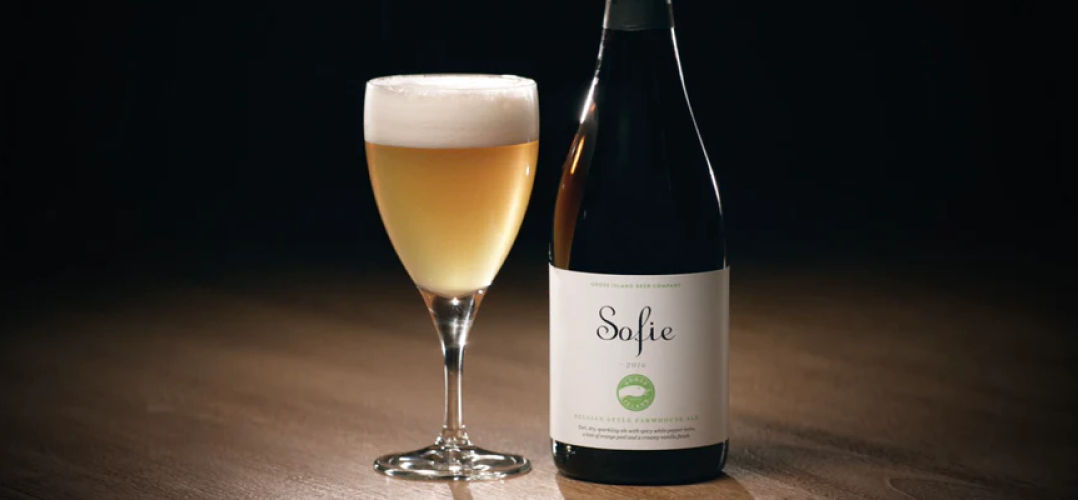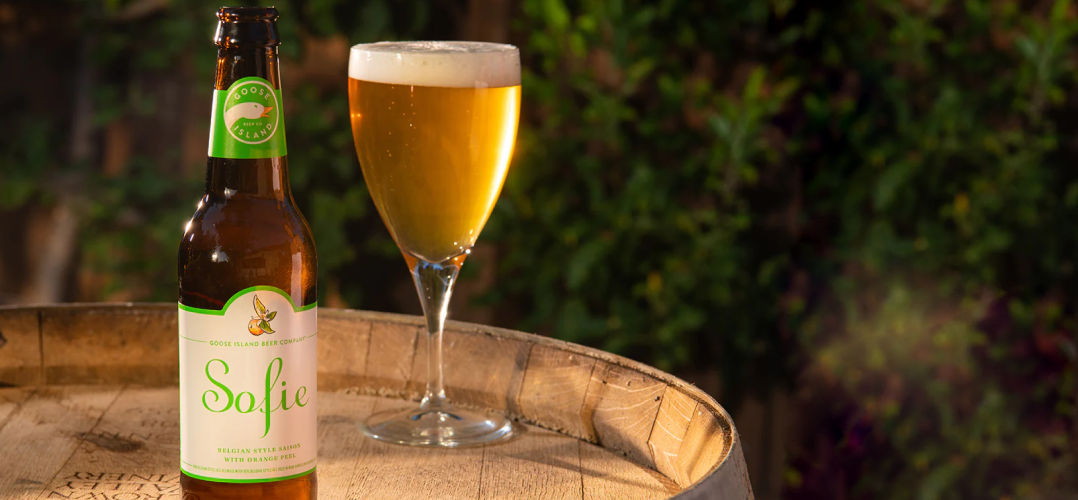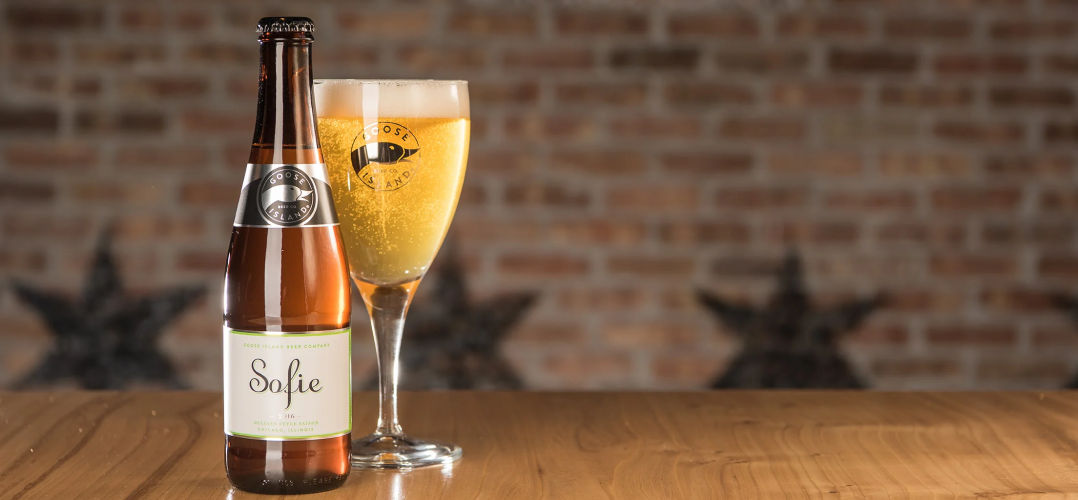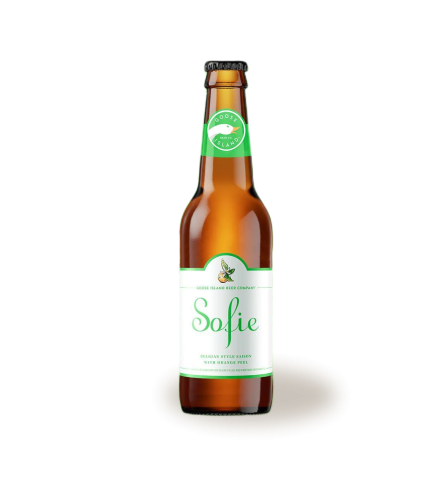
No beer conjures romance more than Saison beer. So it’s no wonder we created a barrel-aged Saison of our own
Imagine: You’re driving a vintage VW Beetle convertible through the Belgian countryside, savouring the smell of wild herbs in the air. Your scarf blows in the wind behind you on your way to the archetypal Saison beer brewery, Brasserie Dupont (Rue Basse 5, Tourpes). At the bar, you order an Avec Les Bons Vœux. The bartender pulls out a dusty bottle, the cork releasing with a vigorous POP!
The beer pours like a fine mousseux, fluffy and snow white, as it flows into your glass. Revelling in the clean herbal aroma, you feel like you’re inhaling the fields around you with every breath. The taste cascades across your tongue. Herbal hops meet pure pilsner malt and the most aromatic, expressive yeast character you’ve ever had the pleasure to taste. This is beer with terroir. Beer shaped its environment. This is Saison beer.
When a beer has this kind of reputation, there’s no keeping our brewers away. Sofie is our twist on the Saison: barrel-aged with a whole lot of orange peel for a zesty kick. But more on this later.
How dare such a thrilling beer still exist in this day and age? So rustic, so bold, and so nearly stamped out a mere 20 years ago. Two centuries ago, industrial lager began its indomitable march from central Europe to the rest of the world. Pilsner and its lager brethren exterminated one indigenous ale style after another, leaving few European survivors. The great ales of Germany were almost wholly wiped out, and the French rustic farmhouse ales also disappeared. But Belgium—tiny, little Belgium—endured. With persistent commitment to quirky, characterful beer, Belgian ales survived. In an industrial-beer landscape with monoculture looming, Saison style beer tenaciously clung on for life in the countryside and, as with most of the great, neglected ale styles of Europe, was brought to the US by enthusiastic craft brewers. From there a renaissance began that still endures today.

SAISON: BEER WITH SOUL
At its base, Saison (meaning ‘season’) is a rustic country ale, with a truly wild flavour. Originally brewed to refresh seasonal farm laborers (the saisonniers), it has always been a country beer. The flavor is explosive, with loads of peppery, spicy esters from yeast and an occasional funky character from Brettanomyces. Saison is traditionally sold in champagne bottles, the color varies from pale to orange, the clarity spans from brilliant to cloudy, and the alcohol level ranges from 4.5% ABV all the way up to 9% for special holiday bottlings. On the palate it’s dry, like an extra brut champagne with the exuberant carbonation to match. Saison is a beer meant to refresh more than intoxicate. Saison is more than just a beer; it’s an idea. And more than any other beer, Saison is dependent upon expressive yeast character, and the unique Saison yeast is how this idea expresses itself in the world. For lager beer, fermentation proceeds at an austere 45 to 55 degrees, the chill temperature producing a product focused on elegant malt and hops character. Lager yeast is like a well-meaning elderly relative who drops the house temperature at night to bone-chilling levels while you shiver under multiple blankets. Saison yeast laughs at the restraint of lager and blows past the relative warmth of English ale strains and their 65 to 70 degree fermentations. Saison achieves its most expressive excitement of character by fermenting at 70 to 75 degrees, but it’s unafraid to go up to 80 degrees or, in the case of the legendary Dupont strain, all the way to 90 degrees.
The origin of Saison has it as a low-alcohol beer, a super-dry quaffer. Consuming the beer fresh was not optional but mandatory, as the beer would quickly turn acetic (the smell/taste of vinegar, nail polish, and similar) if it were not consumed within a few weeks of brewing. Saison beer was a ‘right now’ kind of beer, meant to be chugged after a long sweaty day harvesting barley, sugar beets, and Schaerbeek cherries (a sour variety used to make Flemish-style kriek beer). Our barrel-aged Saison, Sofie, might be 6.5%, but its light, subtly sour, zesty flavour is this kind of refreshment exactly.
Then the lager wave came, and the predominant invigorating ale styles were virtually exterminated. Witbier died and wasn’t revived for decades. Trappist monks had the sanctuary of their church walls to protect their ales, but many stopped brewing altogether. Lambic (including gueuze), Oud Bruin (Flanders Brown), Bière de Garde (French farmhouse ales) were all on the edge of extinction as homogenisation became the rule of the day.
Enter Vanberg & DeWulf, an importer of fine Belgian beer. On a tip from Michael Jackson (not that Michael Jackson; rather, the famous British beer writer), it began importing beers from Brasserie Dupont in the late 1980s. The charming style took off in the US, and the nascent craft movement was smitten. What began as a crush became a full-fledged obsession among American craft brewers. Today BeerAdvocate lists more than 11,000 examples of Saison; 30 years ago you would have been hard-pressed to find five.
If you want to learn more about Saison, check out the book Farmhouse Ales by Phil Markowski or any of the works of the late, great beer writer Michael Jackson.

THE PERFECT PAIRING PARTNER
So what kind of beer is Saison today? It’s a true family. It’s a style as much as a concept. It’s traditional and experimental, wild yet classy all at once. Historically, Saison was (and is) made by farmhouse breweries. This isn’t sterile, cold lager brewing we’re talking about here; fermentation would literally take place in a barn. Brettanomyces yeast and its brethren Lactobacillus and Pediococcus would invite themselves over to play, adding funky notes and a quenching acidity to the beer. If Saison Dupont from Brasserie Dupont is the archetypal example of a modern, ‘clean’ Saison, Fantôme Saison from Brasserie Fantôme would be its opposite—a wild and rambunctious ale from one of the most interesting personages in craft beer.
This kind of irrepressible expression is exactly what we aim to conjure with our barrel-aged Saison, Sofie. Lightly sweet, effervescent and subtly sour, Sofie really gives champagne a run for its money. Since we wine barrel-age our Saison with hand-zested orange peel, spicy white pepper notes are met with a tart, citrus kick. A light, creamy vanilla finish really seals the deal. This is one drink worthy of any celebration.
Now to the most important question: What to eat with Saison? Of all beers, Saison is a food-friendly one, lending itself to a variety of dishes and cuisines. A lighter Saison is a delicate dance partner for salad with vinaigrette, while heavier-bodied amber Saisons can even manage to stand up to steak. There are two great pairings that rise above the rest, one firmly traditional and one brashly American. The traditional pairing is Belgian moules frites (mussels and French fries). The voluminous carbonation of the beer cuts through the oily fried potatoes, while the peppery, spicy yeast notes enliven the briny mussels (typically harvested that day from the North Sea). Saison and mussels is a near-unassailable classic that must be experienced, a lovely example of ‘what grows together, goes together’.

Ready for some taste testing? Check out Sofie Barrel-Aged Saison.
